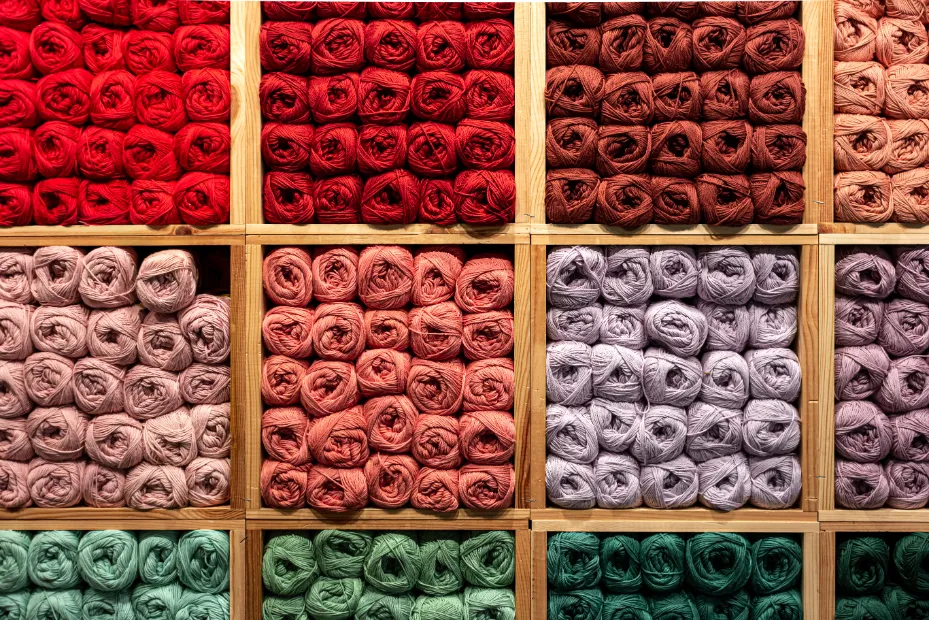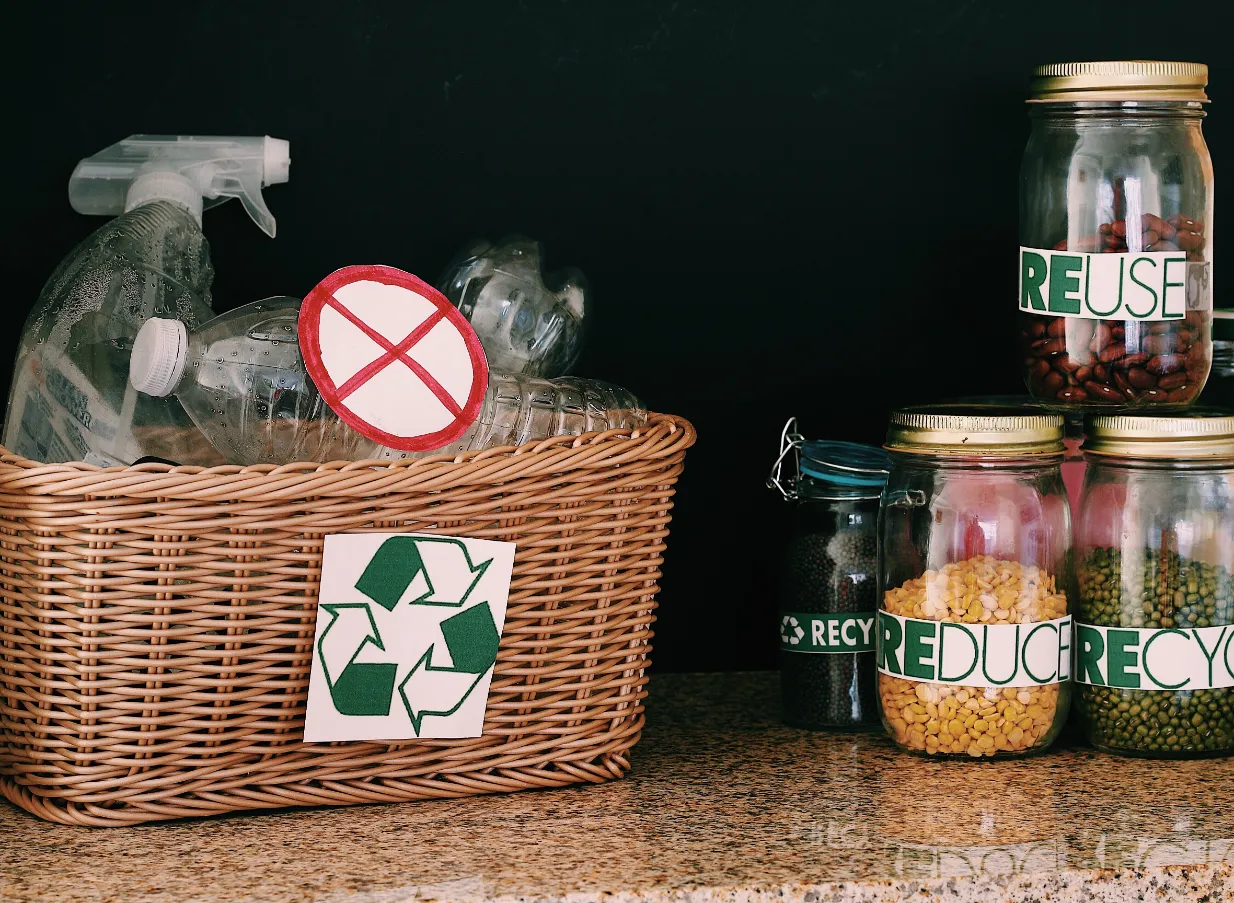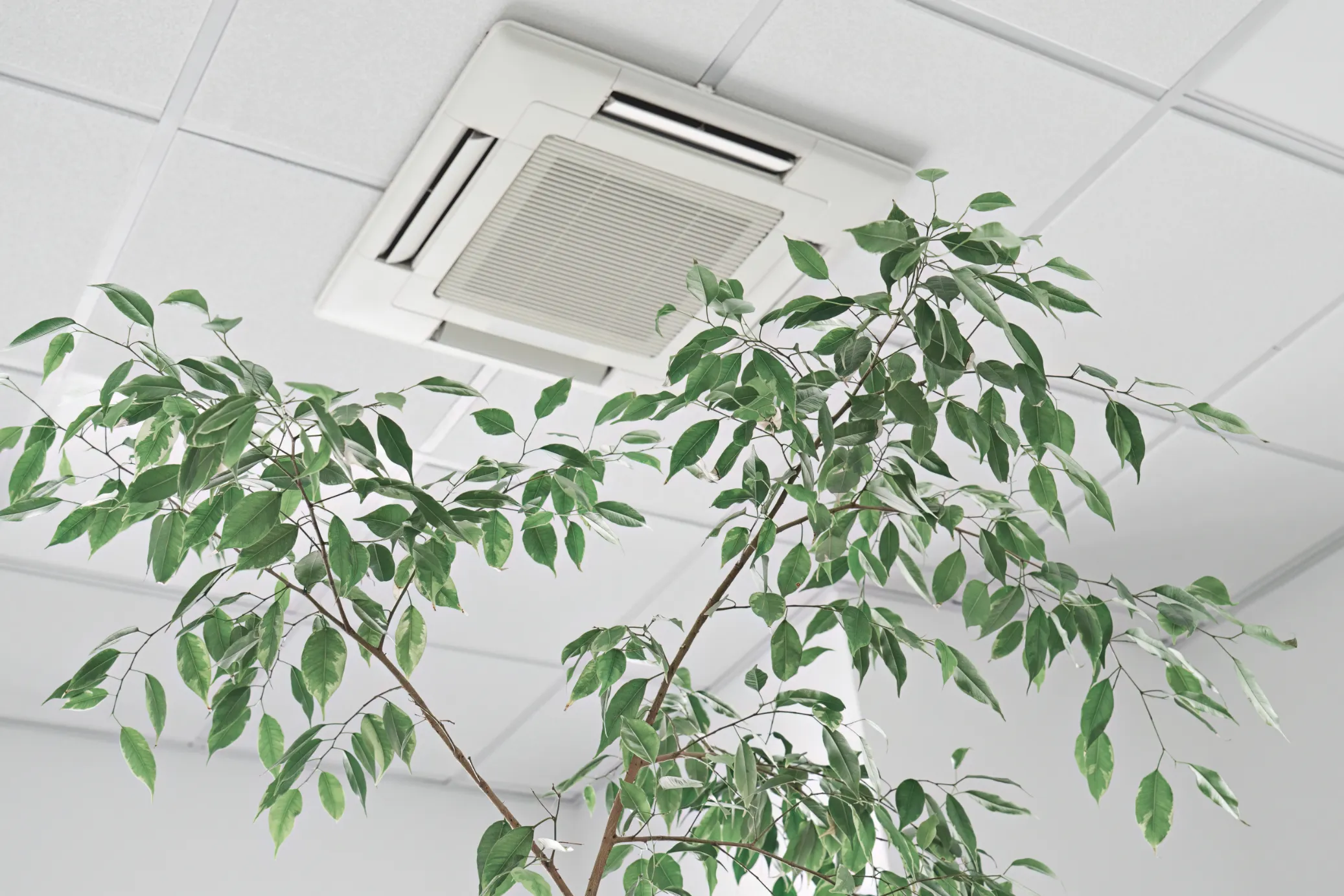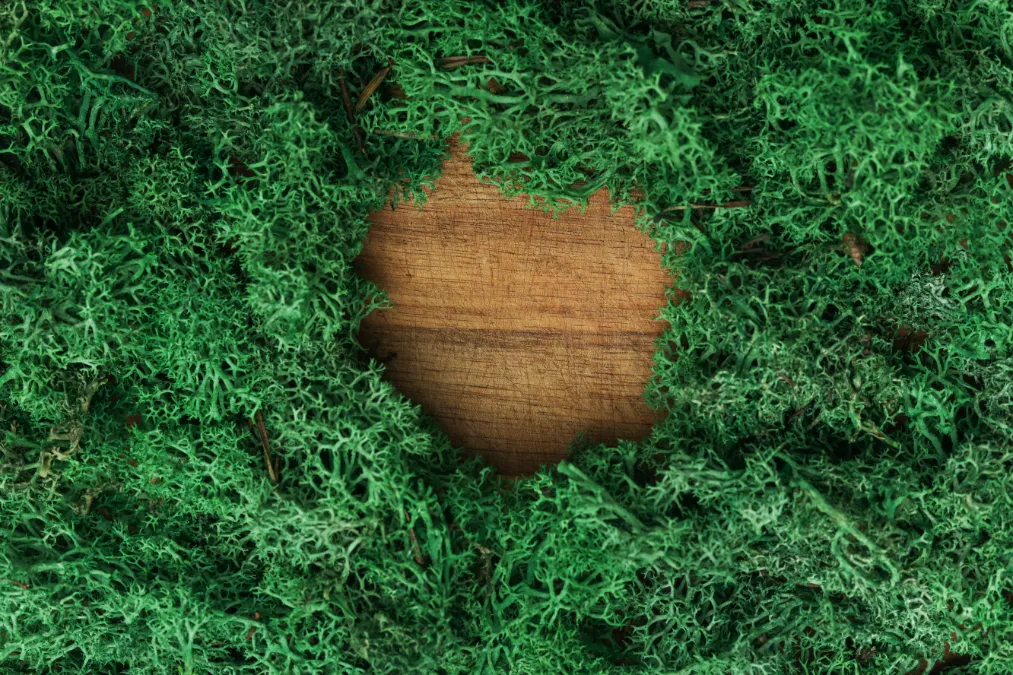
Dive into the realm of sustainable interior design. Learn practical techniques to create environmentally conscious and visually appealing spaces. Nowadays, sustainability is not just a buzzword; it has become a critical consideration in all aspects of our lives, including the spaces we inhabit.
As an interior designer, you can shape environments that reflect your client’s tastes and preferences and contribute to a greener future. You can make a meaningful difference in the world by incorporating sustainable practices into your designs.
Therefore, in Today’s competitive environment, you can distinguish yourself only if you strive to create beautiful and functional spaces while also making a positive impact on the environment. In this blog, we will dig deeper into the fascinating world of sustainability and interior design, exploring five best practices that can transform your interior design projects into eco-friendly and socially responsible endeavors.
First, let's take a moment to reflect on some intriguing interior design facts. Did you know that the concept of interior design dates back thousands of years? From ancient civilizations to modern times, humans have sought to create harmonious and functional spaces that enhance their well-being.
However, it takes more than just an eye for aesthetics to excel in interior design. You also need diverse skills and a deep understanding of various interior design concepts and elements. And that's where sustainability comes into play.
By incorporating sustainable practices into your design process, you can elevate your interior design skills to the next level and create spaces that are not only visually appealing but also environmentally responsible.

Sustainability simply means meeting the needs of the present without compromising the ability of future generations to meet their own needs. It encompasses environmental, social, and economic aspects, seeking to create a harmonious balance between these three pillars.
In practical terms, sustainability in interior design can involve using eco-friendly materials such as reclaimed wood or recycled textiles, promoting energy efficiency through LED lighting and smart home technology, reducing waste through recycling and upcycling, ensuring healthy indoor air quality with low-emitting materials and proper ventilation, and integrating biophilic interior design elements that connect occupants with nature.
These practices minimize environmental impact, conserve resources, promote human well-being, and contribute to a more sustainable and resilient future. Let us understand the Best Practices to incorporate sustainability in Interior design:

When it comes to sustainable interior design, one of the key factors to consider is material selection and sourcing. The materials you choose for your projects can have a significant impact on the environment, as well as the well-being of the inhabitants.
By selecting sustainable materials, you can curate interiors that are not only visually appealing but also eco-friendly. Let's dive into some essential considerations and practical examples to help you make informed choices.
Interior Design Fact: Did you know that the construction and operation of buildings account for a significant portion of global greenhouse gas emissions? Understanding the environmental impact of materials is crucial for sustainable interior design. Opt for materials that have a minimal carbon footprint, are renewable or recycled, and have low embodied energy.
For example, reclaimed wood adds character to a space while reducing the need for cutting down new trees. Bamboo, known for its rapid growth and renewability, can be an excellent alternative to traditional hardwood.
Interior Design Concept: Responsible sourcing involves ensuring that materials are ethically and sustainably produced.
When selecting materials, look for certifications such as Forest Stewardship Council (FSC) or Sustainable Forestry Initiative (SFI) labels. These certifications indicate that the wood used in the product comes from responsibly managed forests. Similarly, certifications like Global Organic Textile Standard (GOTS) or OEKO-TEX Standard 100 ensure that textiles are produced without harmful chemicals and with fair labor practices.
Interior Design Element: Flooring plays a significant role in the overall aesthetic and functionality of a space.
Consider eco-friendly flooring options like cork, bamboo, or reclaimed hardwood. Cork is a sustainable choice as it is harvested from the bark of the cork oak tree, which regenerates quickly. Bamboo, with its fast growth rate, offers durability and versatility. Reclaimed hardwood gives a unique character to a space while reducing the demand for new timber.
Interior Design Skill: Choosing low-VOC paints and finishes contributes to better indoor air quality.
Volatile Organic Compounds (VOCs) released by traditional paints and finishes can have adverse health effects. Opt for low or zero-VOC paints and finishes that are water-based or have natural ingredients. These alternatives emit fewer harmful chemicals, improving indoor air quality while still providing a wide range of colors and finishes.
Interior Design Element: Repurposing materials reduces waste and promotes resource conservation.
Embrace the concept of recycling and upcycling in your designs. For example, incorporate recycled glass countertops, which give a sleek and sustainable touch to kitchens and bathrooms. Upcycle vintage furniture by refurbishing and giving it a new life. Get creative and explore ways to repurpose materials to add unique and environmentally friendly elements to your projects.
By consciously selecting sustainable materials and sourcing them responsibly, you can create interior spaces that are both visually stunning and environmentally conscious. Consider the environmental impact, certifications, eco-friendly flooring options, low VOC paints, and the possibilities of recycling and upcycling.
These choices will not only make your interior designs stand out but also contribute to a greener future. Keep these best practices in mind as you embark on your sustainable interior design journey.

Energy efficiency and lighting play a crucial role in incorporating Sustainability into your interior design processes. By incorporating energy-saving practices and optimizing lighting design, you can create spaces that are not only visually appealing but also environmentally responsible. Let's explore some key considerations and practical examples to help you enhance energy efficiency in your designs.
Interior Design Fact: Did you know that incorporating natural light in your designs can improve occupants' well-being and reduce reliance on artificial lighting?
Maximizing the use of natural light is a fundamental approach to energy efficiency. Consider the orientation and placement of windows in your design to optimize daylighting. Use skylights or light tubes to bring natural light to interior spaces. By reducing the need for artificial lighting during daylight hours, you can significantly decrease energy consumption.
Interior Design Element: Lighting fixtures are not only functional but also have a significant impact on the overall ambiance of a space.
When selecting artificial lighting, opt for energy-efficient options such as LED (Light Emitting Diode) bulbs. LED lights consume less energy and have a longer lifespan compared to traditional incandescent bulbs. Additionally, LED lighting allows for greater control, enabling dimming or zoning to adjust light levels as needed. Consider programmable lighting systems or smart lighting technology for automated scheduling and energy management.
Interior Design Concept: Task lighting provides focused illumination for specific activities, reducing the need for overall ambient lighting. Incorporate task lighting solutions strategically to provide adequate lighting for specific areas and tasks.
For example, installing adjustable desk lamps in workstations or under-cabinet lights in kitchens can provide targeted illumination, minimizing the need for full-room lighting. By using task lighting, you can reduce energy consumption and create functional, well-lit spaces.
Interior Design Skill: Selecting energy-efficient appliances contributes to overall energy savings in any space.
Encourage your clients to choose energy-saving appliances such as refrigerators, dishwashers, and HVAC systems with high Energy Star ratings. These appliances are designed to consume less energy while maintaining optimal performance. Energy-efficient appliances not only help reduce energy consumption but also provide long-term cost savings for occupants.
Interior Design Skill: Smart home technology enables energy management and control through automation and remote access.
Consider incorporating smart home features into your designs. Smart thermostats allow users to schedule temperature settings, optimize energy usage, and control heating and cooling remotely. Lighting systems can be automated or controlled through mobile apps to ensure lights are only on when needed.
By integrating smart home technology, you can empower occupants to actively manage energy consumption and promote sustainable living. By prioritizing energy efficiency and optimizing lighting in any interior design, you can curate spaces that are both environmentally friendly and visually appealing.
Remember to harness natural light, opt for energy-efficient lighting fixtures, embrace task lighting, encourage energy-saving appliances, and explore smart home technology. These practices will not only enhance energy efficiency but also contribute to a more sustainable future.

Adoption of strategies that minimize waste generation and promote responsible disposal can contribute to a greener future for all of us and our future generations. Let's explore some key practices and practical examples that will help you integrate waste reduction and recycling into your design projects.
Interior Design Fact: Did you know that the construction industry generates a significant amount of waste, including materials, packaging, and debris?
One way to minimize waste is to plan meticulously during the construction phase. Estimate material quantities accurately to avoid overordering and reduce the number of unused materials. Collaborate closely with contractors and suppliers to ensure proper handling and disposal of construction waste.
By implementing effective waste management practices, you can significantly reduce the environmental impact of your interior design projects.
Interior Design Concept: Upcycling and repurposing involve transforming discarded materials into new and valuable items.
Instead of discarding old furniture or decor items, consider repurposing them to give them a new lease on life. Upcycle a wooden pallet into a unique coffee table or transform vintage doors into stylish room dividers. By embracing upcycling, you not only reduce waste but also add character and uniqueness to your designs.
Interior Design Concept: Choosing sustainable and recycled materials reduces the demand for new resources and minimizes waste generation.
When selecting materials, prioritize those made from recycled or reclaimed sources. For example, incorporate recycled glass tiles in a bathroom design or use salvaged wood for flooring or furniture. These choices contribute to waste reduction and add a distinctive eco-friendly touch to your projects.
Interior Design Skill: Setting up proper recycling systems encourages responsible waste management in interior spaces.
Integrate designated recycling bins into your interior design plans to make recycling accessible and convenient. Consider different waste streams such as paper, plastic, glass, and organic waste. Communicate the importance of recycling to your clients and provide clear instructions on how to separate and dispose of different types of waste. By making recycling a seamless part of the daily routine, you can promote sustainable habits.
Interior Design Skill: Educating clients on sustainable practices empowers them to make environmentally conscious choices.
Take the opportunity to educate your clients on the benefits of waste reduction and recycling. Share information on the environmental impact of their choices and provide practical tips on how to adopt sustainable practices in their daily lives.
Encourage them to consider donating or selling unwanted furniture and decor items instead of disposing of them. By empowering clients with knowledge, you can create a ripple effect of sustainable behavior beyond the confines of your design projects.
By integrating waste reduction and recycling practices into your interior design process, you can significantly reduce the environmental footprint of your projects. Focus on reducing construction waste, embrace upcycling and repurposing, opt for sustainable and recycled materials, implement effective recycling systems, and educate clients on sustainable practices.

The quality of the air we breathe in our homes and workplaces directly impacts our well-being. As an interior designer, you have the power to create spaces that promote healthy indoor environments. Check out some key considerations and practical examples that will help you prioritize indoor air quality in your design projects.
Interior Design Fact: Did you know that indoor air can be two to five times more polluted than outdoor air?
Understanding the importance of indoor air quality is the first step towards creating healthier spaces. Poor indoor air quality can lead to various health issues, including allergies, respiratory problems, and fatigue. By prioritizing indoor air quality, you can enhance the overall well-being of occupants and create spaces that are conducive to good health.
Interior Design Fact: Low-emitting materials release fewer volatile organic compounds (VOCs) and other harmful chemicals into the air.
Choose interior materials and finishes that have low VOC emissions. Opt for paints, adhesives, and sealants with low or no VOC content. Consider using natural or eco-friendly materials, such as organic textiles or sustainably sourced wood. These choices help reduce indoor air pollution and create a healthier environment for occupants.
Interior Design Element: Proper ventilation ensures a continuous supply of fresh air, dilutes pollutants and improves indoor air quality.
Incorporate effective ventilation systems in your designs to ensure proper air circulation. Consider natural ventilation strategies, such as operable windows or skylights, to allow fresh air to enter the space. When natural ventilation is insufficient, explore mechanical ventilation options, such as energy-efficient HVAC systems with air filters. Adequate ventilation removes stale air and contaminants, contributing to healthier indoor environments.
Interior Design Skill: Incorporating indoor plants and biophilic interior design elements improves air quality and creates a connection with nature.
Indoor plants not only add beauty to a space but also act as natural air purifiers. They absorb carbon dioxide and release oxygen while filtering out harmful pollutants. Incorporate indoor plants strategically throughout your designs, considering light and maintenance requirements. Additionally, embrace biophilic design elements, such as natural materials and textures, to create a sense of connection with the natural world.
Interior Design Skill: Designing spaces with allergen control and maintenance in mind helps create healthier environments for occupants.
Consider materials and furnishings that are resistant to dust mites, mold, and other allergens. Choose flooring options that are easy to clean and maintain, such as hard surfaces or low-pile carpets. Specify washable curtains or blinds that can be easily cleaned to prevent the accumulation of dust. By designing spaces with allergen control and maintenance in mind, you can minimize potential health triggers for occupants.
By prioritizing indoor air quality and health in your interior design projects, you can create spaces that foster well-being and enhance the overall quality of life for occupants. Focus on low-emitting materials and finishes, ensure proper ventilation, incorporate indoor plants and biophilic design elements, and consider allergen control and maintenance.

Biophilic interior design is a concept rooted in our innate connection with nature. It recognizes the profound impact that nature has on our well-being and seeks to incorporate natural elements into interior spaces.
As an interior designer, you can create environments that evoke a sense of calm, improve productivity, and promote overall well-being. Here are some key considerations and practical examples that will help you integrate biophilic design principles into your projects.
Biophilic design aims to create spaces that foster a connection with nature, improving mental and physical well-being.
Biophilic design acknowledges the innate human need for nature and seeks to integrate natural elements into interior spaces. By incorporating elements such as natural light, plants, and organic materials, you can create environments that evoke a sense of tranquility and promote positive emotions.
Also Read: Top 5 Biophilic Interior Design Facts & Benefits To Create Nature-Inspired Interiors
Interior Design Element: Maximizing natural light and providing views of nature has a profound impact on occupant well-being.
Consider the placement of windows and skylights to allow ample natural light to enter the space. Natural light not only enhances visual comfort but also contributes to a sense of connection with the outdoors. Additionally, provide views of nature, whether it's a picturesque landscape, a garden, or a courtyard. These views can have a calming effect and provide a respite from the built environment.
Interior Design Skill: Integrating plants and greenery brings the benefits of nature indoors and creates a refreshing ambiance.
Consider incorporating indoor plants strategically throughout your interior designs. Choose plant species that thrive indoors and complement the overall aesthetic. Plants not only improve air quality by filtering toxins but also contribute to a sense of well-being and biophilic connection. Create green walls, install hanging planters, or introduce potted plants to add a touch of nature to your spaces.
Interior Design Skill: Incorporating natural materials and textures enhances the sensory experience and creates a connection with the natural world.
Go for materials such as wood, stone, or natural fibers in your designs. These materials provide visual and tactile cues that evoke a sense of nature. Use reclaimed wood for flooring or accent walls, incorporate stone elements in bathroom designs, or choose organic textiles for upholstery and drapery. The presence of these natural elements adds warmth, texture, and a touch of authenticity to your spaces.
Interior Design Element: Water features and natural sounds contribute to a soothing and calming environment.
Consider incorporating water features such as fountains, aquariums, or indoor water walls in your designs. The sound of flowing water can create a relaxing ambiance and evoke a sense of tranquility. Additionally, explore ways to incorporate natural sounds, such as soft wind chimes or recordings of gentle rainfall. These subtle auditory cues can contribute to a sense of connection with nature.
By integrating biophilic interior design principles into your projects, you can create interior spaces that foster a deep connection with nature and enhance the well-being of occupants.
Focus on maximizing natural light and views, incorporate plants and greenery, choose natural materials and textures, and consider water features and natural sounds. These elements will create a refreshing and calming ambiance that promotes mental and physical well-being.
Incorporating sustainable practices into your interior design projects is not just a trend; it's a responsibility. By prioritizing sustainability, you have the power to create spaces that are not only visually stunning but also environmentally conscious and healthy for occupants.
From material selection and energy efficiency to waste reduction and biophilic design, every choice you make can contribute to a more sustainable future. So, continue to educate yourself, explore innovative solutions, and collaborate with like-minded professionals.
Together, let's design spaces that inspire, nurture well-being, and minimize our impact on the planet. Your commitment to sustainable interior design will make a significant difference in shaping a greener and healthier world.
FAQs
Absolutely! Sustainable interior design does not mean compromising on aesthetics. In fact, sustainable design principles can enhance the visual appeal of your spaces. There is a wide range of eco-friendly materials, finishes, and furniture available that offer both style and sustainability.
From reclaimed wood to recycled glass, these materials can add unique textures and character to your designs. By incorporating nature-inspired elements and using thoughtful design strategies, you can create visually stunning spaces that are also environmentally conscious.
The green design focuses on reducing environmental impact through energy efficiency and eco-friendly materials, while sustainable design encompasses broader considerations, including social and economic factors, throughout the project's lifecycle.
In essence, green design is a subset of sustainable design, focusing specifically on environmental concerns.
Sustainable interior design is important because it minimizes the environmental impact of our spaces while promoting the well-being of occupants. It helps reduce energy consumption, waste generation, and the use of harmful chemicals, creating healthier indoor environments. Additionally, sustainable design practices contribute to the preservation of natural resources and support a more eco-friendly and sustainable future.